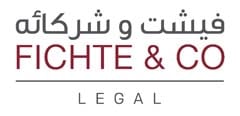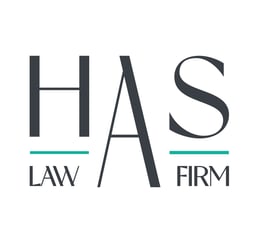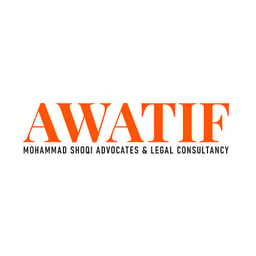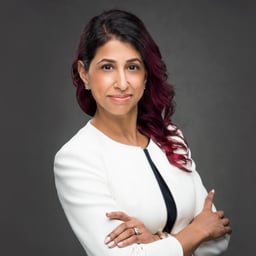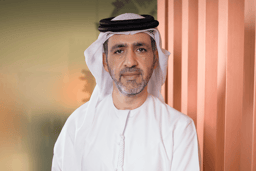Commercial, corporate and M&A
From residency to second citizenship: Europe’s emerging hybrid migration models
Under the 2025 guide, a Family Foundation is defined (for tax purposes) as any foundation, trust or similar entity used to hold family wealth – including real estate, investments, assets, and holdings – provided it meets the requirements of Article 17(1) of the Federal Decree‑Law No. 47 of 2022 on Corporate Tax.
Importantly:
It is not a new type of legal entity per se – rather it’s a tax-treatment classification for existing structures (foundations, trusts, other entities) that meet certain criteria.
This means that a foundation set up in a Free Zone such as DIFC (or equivalent zones such as RAK ICC or ADGM) can qualify – and likewise, a foreign foundation/trust owning UAE property may also qualify under the right conditions.
For wealth-holding, real-estate, and cross-jurisdictional families, the Family Foundation concept offers a powerful, flexible, and globally respected structure – now backed by clear UAE tax law.
What Conditions Must a Family Foundation Meet?
To qualify as a “Family Foundation” (eligible for favourable tax treatment), the structure must satisfy all of the following under Article 17(1):
Beneficiary Condition: Beneficiaries must be identifiable natural persons and/or public-benefit entities.
Principal Activity Condition: The main activity of the foundation must be limited to receiving, holding, managing, investing or disbursing assets/funds – i.e. wealth/asset management, not operating an active business.
No “Business Activity” Condition: The foundation must not conduct commercial/business activities that a natural person would need a licence to perform.
No Tax-Avoidance Purpose: The foundation’s purpose must not be primarily tax avoidance. If the foundation’s objective is simply asset/wealth holding, investment, inheritance or charitable benefit, it passes.
If Distributions Are Made to Public-Benefit Entities: Additional rules apply – distributions of income to public entities must be made within defined timeframes for the foundation to retain its status.
Importantly, unincorporated trusts (such as those formed in DIFC or ADGM) which have no separate legal personality are by default treated as unincorporated partnerships for tax purposes – i.e. fiscally transparent – and may not need a separate “application,” although they still must meet the beneficiary/principal-activity conditions if regarded as a Family Foundation.
What the Tax Treatment Now Means – Major Benefits for Investors
Fiscally Transparent – Not Taxed at Foundation Level
If approved, a Family Foundation (or trust/structure treated as such) will be treated as an Unincorporated Partnership – meaning the foundation itself is not subject to corporate tax. Instead, any income (rental income, capital gains, dividends, interest, etc.) flows through to the beneficiaries.
Implication: Real estate investors, families and beneficiaries can benefit from UAE property income and gains – potentially with 0% UAE corporate tax, provided the recipients are natural persons (or certain exempt public-benefit entities).
Multi-Tier Structures Are Supported
If the Family Foundation owns other legal entities (e.g. companies, SPVs, holding vehicles), those can also be treated as transparent – provided they are wholly owned and controlled by the foundation, and the entire structure meets the Article 17 conditions.
This allows complex family holdings – real estate, shareholdings, investments – to be inside a single transparent vehicle, with consolidated tax treatment. Very advantageous for families with multi-jurisdictional assets or mixed real estate + corporate holdings.
Flexibility for Foreign Foundations or Non-UAE Residents
The guide explicitly allows foreign foundations/trusts to qualify – provided the conditions are met. For many global families, this provides significant flexibility without needing to re-domicile to UAE.
Streamlined Compliance – Registration + Annual Confirmation
Applicable foundations must register for Corporate Tax with the FTA via EmaraTax.
Once approved, foundations (and wholly-owned subsidiaries) must file an Annual Confirmation (within 9 months of the end of each tax period) to confirm they continue meeting the qualification conditions.
If at any time the conditions are not met, the “transparent” status is lost – which would render the foundation (and underlying entities) taxable as standard corporate vehicles.
This encourages robust compliance, substance, and proper governance – making the structure robust, defensible, and sustainable over the long term.
Why a DIFC (or Other Free Zone) Foundation Is Often the Best Option in 2025
For investors and families – especially high-net-worth, multi-jurisdictional or globally mobile – a foundation formed under a reputable Free Zone foundation regime like DIFC offers a unique combination of:
Legal certainty: DIFC operates under English common law-inspired legislation; recognized globally.
Tax efficiency: When approved as a Family Foundation, it can deliver 0% UAE corporate tax on UAE-sourced income/gains.
Succession Planning & Estate Structuring: Clear governance, beneficiary designation, asset protection, and intergenerational transfer mechanisms.
Asset Protection & Confidentiality: Assets are held under the foundation rather than under individual names.
Flexibility: Works with real estate, investments, shareholdings, cross-border holdings, trusts — and supports multi-tier structures.
Ease of Compliance (relatively): Once structured and approved, ongoing obligations are limited to annual confirmation, record-keeping, and governance maintenance – far simpler than operating a fully licensed commercial entity.
For families investing in property, operating businesses, or building multi-asset portfolios – especially across jurisdictions – a DIFC Family Foundation often represents a best-in-class structure in 2025.
What This Means for Clients of Knightsbridge Group
At Knightsbridge Group, our depth of experience in setting up mix-jurisdiction wealth structures, real estate holdings, and corporate vehicles gives us a distinct advantage. Based on the 2025 FTA guidance, we can:
Structure your real estate and asset holdings via a DIFC (or equivalent) Foundation
Help prepare and submit the application to FTA for “fiscally transparent” Family Foundation status
Set up multi-tier holding structures (foundations + SPVs + operating companies) if needed
Ensure full compliance with Article 17 conditions, UBO disclosures, substance requirements, and governance
Manage ongoing annual compliance and confirmation filings
Provide estate-planning, succession, and asset-protection services — ensuring long-term wealth preservation
The result: your assets are protected, tax-efficient, confidential, cross-border ready — and structured to stand the test of time and regulation.
Conclusion: The 2025 Family Foundations Guide Is a Game-Changer
The May 2025 Corporate Tax Guide on Family Foundations marks a new era of clarity and flexibility in how wealth is held, protected, and taxed in the UAE.
For global investors, expatriate families, real estate owners, and multi-jurisdictional entrepreneurs, a properly structured DIFC Family Foundation (or equivalent) is arguably the most powerful wealth-holding vehicle available in 2025 – offering transparency, tax efficiency, legal certainty, and generational security.
At Knightsbridge Group, we believe this is the future of wealth structuring in the UAE – and we are uniquely positioned to help clients turn that future into reality.
Knightsbridge Group - December 12 2025
